Dobong District Introduction
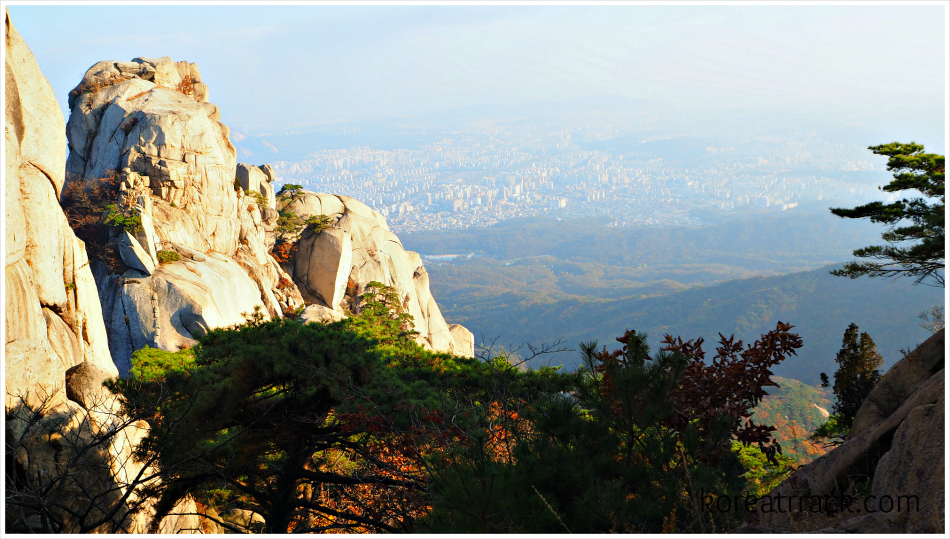 Amazing view from Jaunbong Peak of Dobongsan Mountain
Amazing view from Jaunbong Peak of Dobongsan MountainHistorical background
Dobong District, located in the northern part of Seoul, South Korea, holds a rich historical background that stretches back centuries. Its history is intertwined with the natural beauty of its surroundings, which have served as a gathering place for people throughout the ages.
Let's delve into the historical background of Dobong District...
Ancient Origins
The area now known as Dobong District has been inhabited since ancient times. The district lies at the foothills of Bukhansan, a majestic mountain range that has attracted human settlement for thousands of years. Archaeological discoveries, including dolmens and ancient artifacts, attest to the presence of early human civilizations in the region.
Goguryeo Kingdom
During the Three Kingdoms period (57 BCE - 668 CE), Dobong District was part of the territory controlled by the Goguryeo Kingdom, one of the three major powers of ancient Korea. The mountainous terrain of the district made it a strategic location for the kingdom's defense against rival states. Fortifications and military outposts were established to protect the borders and maintain control over the area.
Joseon Dynasty
With the establishment of the Joseon Dynasty in 1392, Dobong District became an integral part of the newly formed kingdom. During this period, the district underwent significant developments in agriculture, infrastructure, and administration. The fertile land surrounding Dobong-gang (Dobong River) was cultivated for rice farming, contributing to the region's prosperity.
Cultural Significance
Dobong District holds cultural significance as the home of notable figures and sites that shaped Korea's history. One such figure is King Sejo (1417-1468), the seventh king of the Joseon Dynasty. King Sejo's royal tomb, Changneung, is located within the district and serves as a reminder of his reign and legacy.
Natural Beauty
The district's natural beauty, with Bukhansan National Park as its centerpiece, has attracted artists, scholars, and nature enthusiasts throughout history. The stunning mountain landscapes, lush forests, and scenic valleys have inspired countless poets, painters, and writers, who sought solace and creative inspiration in the district's breathtaking vistas.
Modern Developments
In more recent times, Dobong District has undergone rapid urbanization and development. The district has become a residential area, housing a diverse population and offering modern amenities and infrastructure. However, efforts have been made to preserve the district's cultural heritage and natural landscapes, maintaining a delicate balance between tradition and progress.
Today, Dobong District stands as a testament to the enduring legacy of its past. It showcases the harmonious coexistence of historical landmarks, such as Changneung, with the vibrant energy of a modern urban district.
Visitors to Dobong District can explore the intertwining threads of history, culture, and nature, experiencing the rich tapestry that has shaped the district's identity throughout the ages.
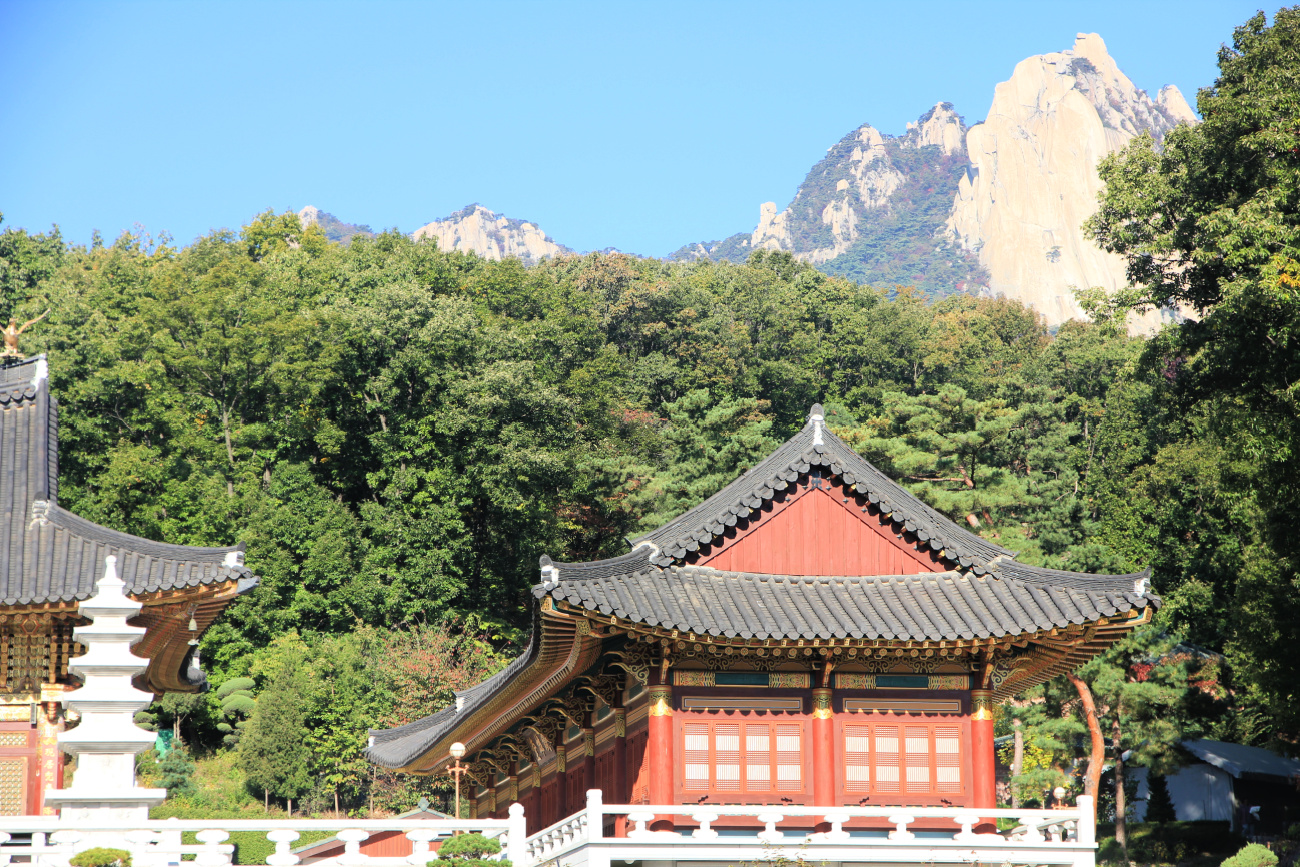 A view of a Buddhist temple with the Dobong Mountain in the background in Dobong District, Seoul.
A view of a Buddhist temple with the Dobong Mountain in the background in Dobong District, Seoul.Dobong District Introduction
Dobong District Introduction article describes this beautiful and fantastic district in Seoul. Dobong-gu ('gu' for the district) and its famous mountain 'Dobongsan' is very popular among locals and international visitors due to its natural and historical heritage.
Dobong-gu is your gateway to Northeast Seoul. It is located within Nowon-gu to the east, Gangbuk-gu to the west, and Uijeongbu City to the North.
Dobong District has a total area of about 20 square kilometers and over 10 square kilometers take up park areas, including the Bukhansan National Park.
Dobong-gu or Dobong District is named after Dobongsan (Mountain), which is one of the prettiest mountains belonging to Bukhansan Park.
Also, the Dobong District became independent from Seongbuk District on July 1, 1973, and named after its famous Dobong Mountain.
More Dobong District Information
Dobong District Introduction page provides brief information on Dobongsan's natural and cultural attractions and well-being offers.
Specifically, I would briefly mention items, including...
- Dobongsan Mountain's Attractions
- Recent Attractions In Dobong District
- History and Culture Aspects of Dobong District
- Dobong District's Historical and Cultural Streets
- Dobong District's Festivals and Cultural Events
- Dobong District's Outing Parks
- Facilities and Convenience Information Guides
Dobongsan Mountain's Attractions
As I have explored many corners of Dobongsan Mountain and its district, I agree that it is such a fantastic place and worth your time and resources!
I have hiked parts of Dobongsan Mountain three times already. And I will certainly do it again and again. It is just so attractive that I can't get enough of it.
Different seasons, distinct beauties!
Anyway, if you have heard (or read this article) about Dobongsan Mountain, you will surely enjoy hiking its various choices of courses. Both locals and expatriates regularly hike Dobongsan during holidays, weekdays, or even as an official outing activity.
When you are in the district, you will find some descriptions of the mountain, including its hiking trails. Of course, the guide recommends trails for various hikers, depending on their skills and experiences.
Around the Dobongsan Mountain area, you can also discover places which are less strenuous (if you so prefer) but leisurely as they don't require leg muscles to explore and enjoy...
- Seoul Iris Garden
- Korea National Park Eco-learning Institute
- Dobongsan Eco Park (Streamside Stage area)
- Dobongsan Dulle-Gil (hiking path)
Of course, you will find more interesting, if not, more exciting and relaxing sights when in the area.
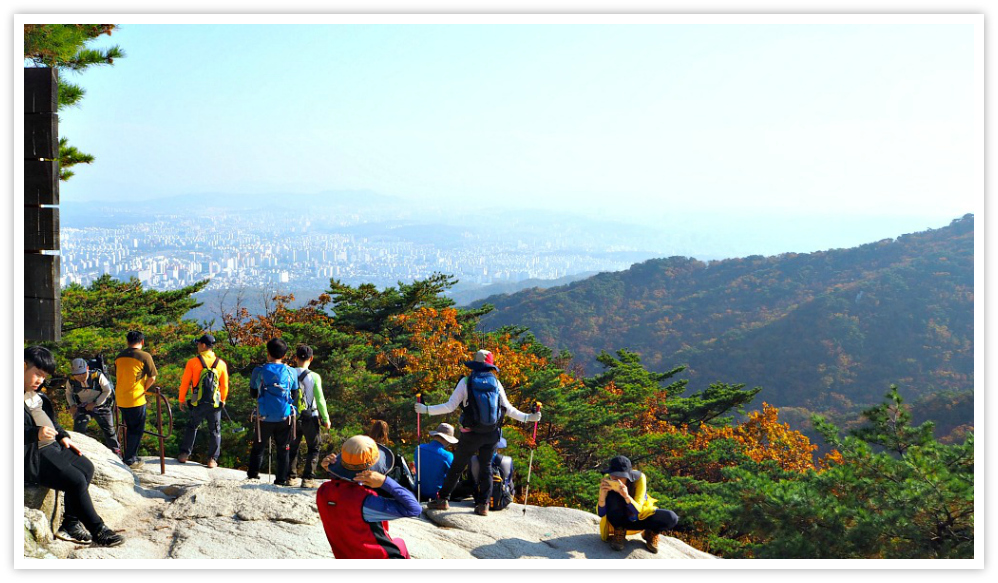 Residents and visitors hike Dobongsan Mountain regularly
Residents and visitors hike Dobongsan Mountain regularlyRecent Attractions In Dobong District
One of the things I am trying to get used to in Korea is change. Things change quite easily and quickly here. I remember years ago when I went to a week's break. When I returned to my house, I thought I got lost but discovered that the nearby building got demolished; that's why I could not recognize my area--my landmark was gone! That's true!
Anyway, what I am implying is that many new things are popping up in Dobong District. Probably, the new attractions I am going to mention below would not be all as there might be more new ones established.
Anyhow, let me mention some exciting places you can visit when in Dobong-gu, including the following...
- Kim Su-young Museum
- Jeon Hyung-pil's House in Banghak-dong
- Ham Seok-heon Memorial Hall
- Dooly Museum
After my visit to Dobong District, I promise to update this topic with new attractions I could find! ^^
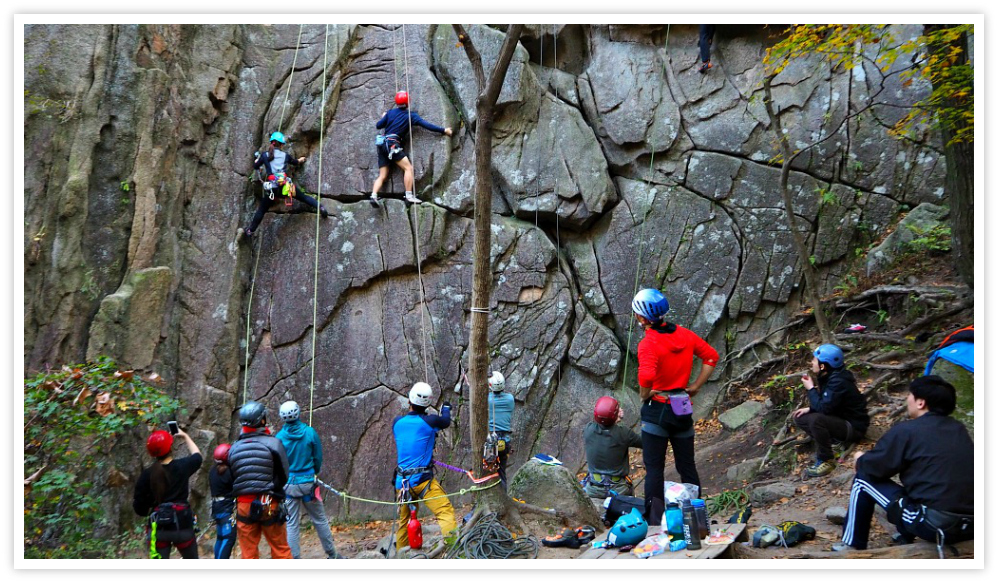 Rock climbing enthusiasts having fun with Dobongsan Mountain's rocky cliffs
Rock climbing enthusiasts having fun with Dobongsan Mountain's rocky cliffsHistory and Culture Aspects of Dobong District
If you are interested in history and memorial sites, you can see these places in Dobong District...
- Royal Tomb of King Yeongsangun
- Old Gingko Tree in Banghak-dong
- Graveyard for Lord Yanghyo and Princes Jeongui
- Graveyard for Long Chungjeonggong Mok Seo-heum
- Wondangsaem Spring
- Royal Tomb of Prince Hoesan
- Graveyard for the Descendants of Prince Yeonghae, Yi of Jeonju Clan
- Tomb of Geumdang
- Graveyard in Choansan Mountain
- Dobongseowon Confucian Academy
- Jo Grang-jo (People's Innovator)
- Song Si-yeol (Symbol of Upright Scholar)
- petroglyphs of Dobong Valley
- Yu Hui-gyeong
- Cheonchuksa Temple
- Seated Stone Buddha of Manworam Hermitage
- Wontongsa Temple
- Graveyard of Lod Hoangong and Princess Uiryeong
- Graveyard of Prince Osan
- Changdong-ri Stone Signpost
- Painting of Blazing Abundant Brightness Buddha Triad in Dobongsa Temple
- Buddhist Painting of Seokguram Hermitage (Deva and Naga)
- Onggi Folk Museum
- Duksung Women's University Museum
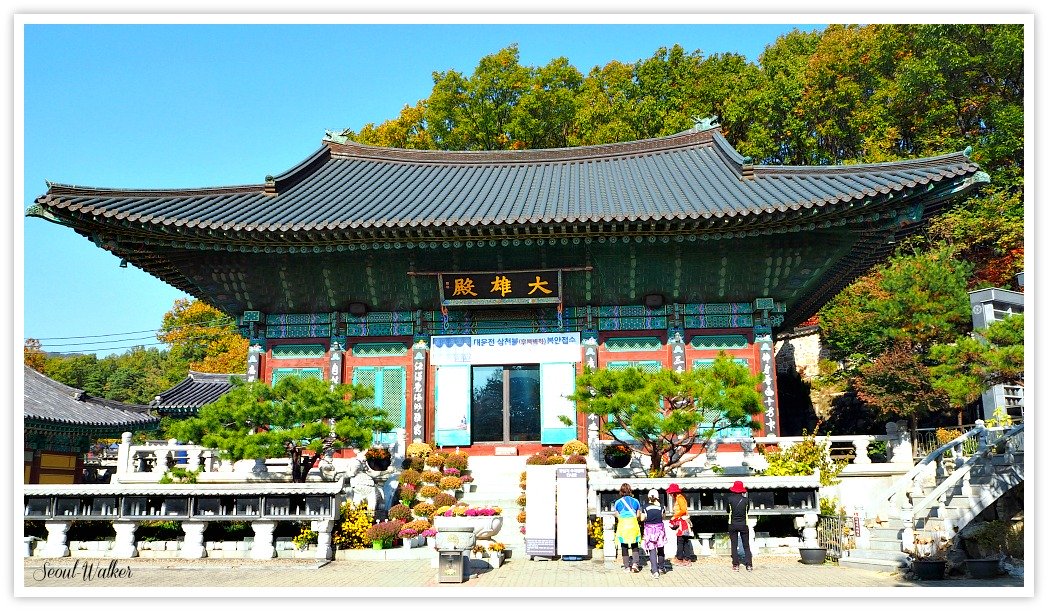 A Buddhist temple in Dobong District area
A Buddhist temple in Dobong District areaDobong District's Historical and Cultural Streets
The following items of Dobong-gu's historical and cultural streets are, in fact, made as trails for hiking.
Yes, I agree that they are recommendable courses for hiking historic sites in the area. Check any of the following when in the area...
- Royal Tomb of King Yeonsangun and Gingko Tree
- Royal Graveyard in Musugol
- Wontongsa Temple Trail
- Dobongseowon Confucian Academy and Petroglyphs
- 1000-Year Old Buddhist Temples
- Old Dobong Path
- Modern Historical Figures in Dobong District
May I suggest that if you are not a mountain hiker, at least you walk and discover any of those sites when you decide to visit Dobong District or happens to be in the area.
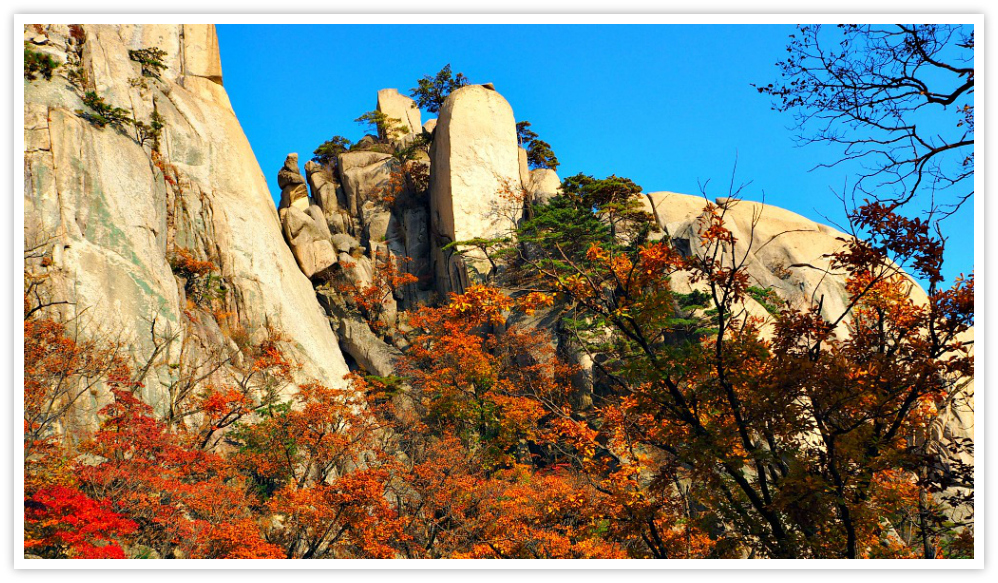 Dobongsan Mountain during peak Fall Season
Dobongsan Mountain during peak Fall SeasonDobong District's Festivals and Cultural Events
Now, aside from the serious features we talked about above, we can also discover some simple but exciting things in Dobong District, including its festivals and cultural aspects.
Below, let's check out the Dobong-gu's events...
- Dobong Hangeul Festival (October 9)
- Chunchuhyang Ritual at Dobongseowon Confucian Academy (September 10)
- Cheonyeongje Ritual at the Tomb of King Yeonsangun (every Spring - TBD)
- Dobongsan Festival (October)
- Dobong Resident Health Festival (May-- 2-day celebration)
- Dobong Science Festival (annual but no specific dates)
- Dobong-gu Lantern Festival
Some festivals and events are not specified but depending on the preparations of the concerned groups and institutions.
Since most of them are organized and supported by Dobong District Office, events that need stable and safe space (such as roofs) are being conducted at the Dobong building.
I remember exploring the science festival one time when I just happened to be at the place at the right time. It was quite interesting to find exhibits, especially from young students displaying their innovative displays.
Dobong District's Outing Parks
Dobong District offers spaces for leisure and relaxation with friends, family, or groups. Some of these public spaces are parks for outings.
One of the significant advantages when outing in Dobongsan District is the majestic sight of the imposing Dobongsan Mountain, among many other things.
Right... here are the popular parks for an outing...
- Balbadak Park (a landscape trees, flowering plants, wetland, and ponds)
- Ssangmun Neighborhood Park (a strolling and exercise park area)
- Choansan Neighborhood Park (great for hiking, leisure, badminton game, events area, etc.)
- Banghak Sagye Square (space for various cultural shows and performances)
- Jungnangcheon Stream (a 20-kilometer long stream for cycling, hiking)
See the links (if available) to help you decide which one is ideal for your outing and leisurely picnic!
Facilities and Convenience Information Guides
This topic can help you discover things you might need when visiting Dobongsan District. You will find here guides to facilities and establishments you wish to see or use.
Restaurants
Accommodations, Shops, Markets
Medical Institutions and Hospitals
Public Transportation
Tourists Center
If you need more information, you may call domestic: 02-120 and 02-1330 for hotline (former number) and complaint (for the latter number).
If you are calling from overseas, simply use +82-2-120 or +82-2-1330.
My sources for the Dobong District Introduction article are based on my personal experiences of the area and about the Korean culture in general. Also, I get some information from 'Nature and culture become one Dobong Tour' guidebook.
Check out their website for more information: tour.dobong.go.kr to see more updates and recent events.
Thanks for reading through this article, and I hope you find this helpful. Please, be kind to share or like if you do.
Enjoy your tour!
- Home
- Historical Attractions
- Dobong District Area
Get Exciting Activities
Book one of our exciting activities today to experience the thrill of a lifetime! Take advantage of this opportunity and secure your spot in advance.
Hotel Map Guide
Find your affordable, accessible, and comfortable hotel in Seoul at Agoda.Com. See the hotel map below...
Hotel Booking Guide
Find affordable and amazing hotels on Agoda.com using the search box below. Book now to enjoy great discounts and save!
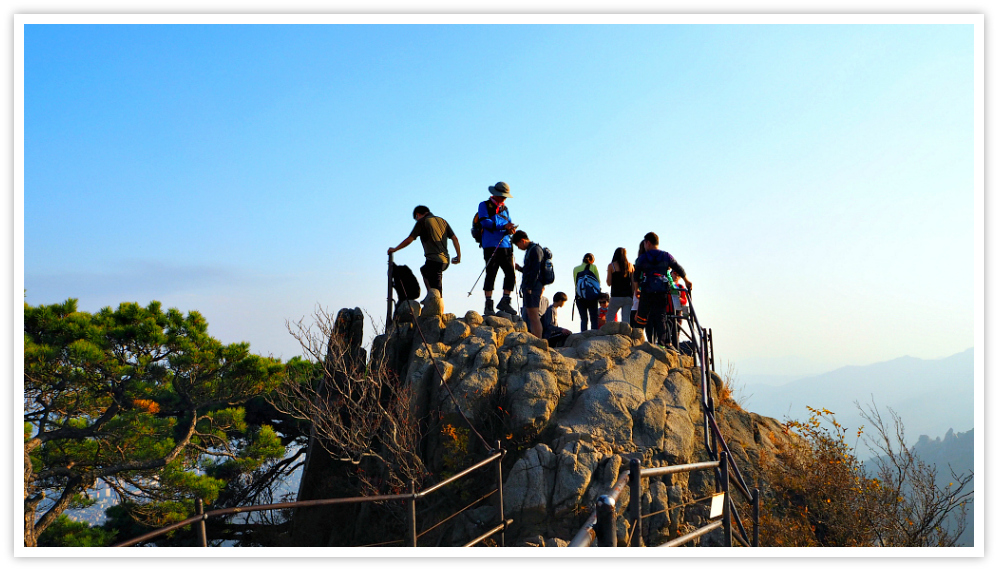

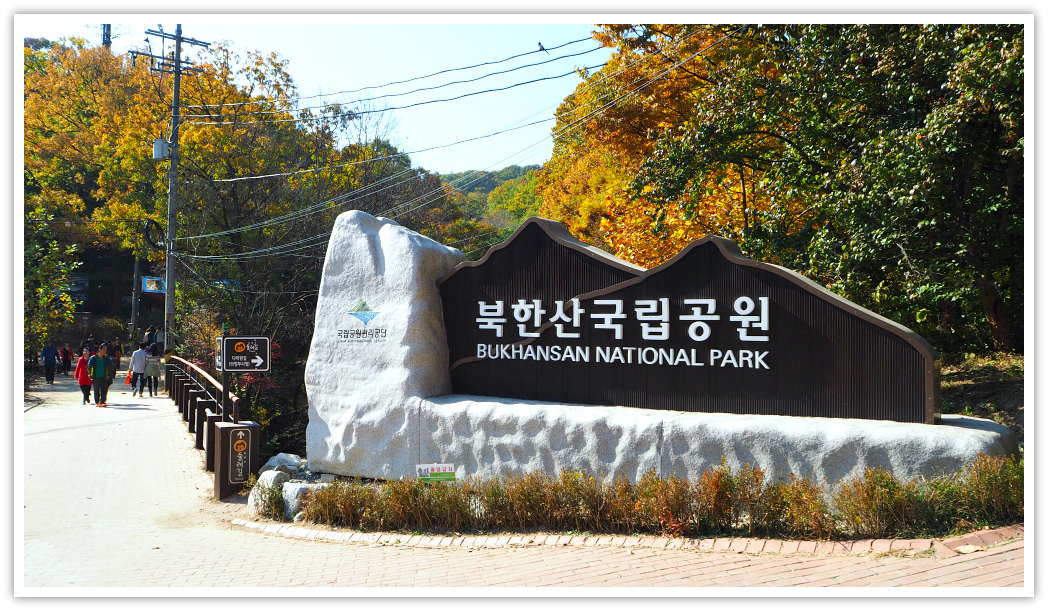




New! Comments
What do you think about this page? Leave me a comment in the box below.